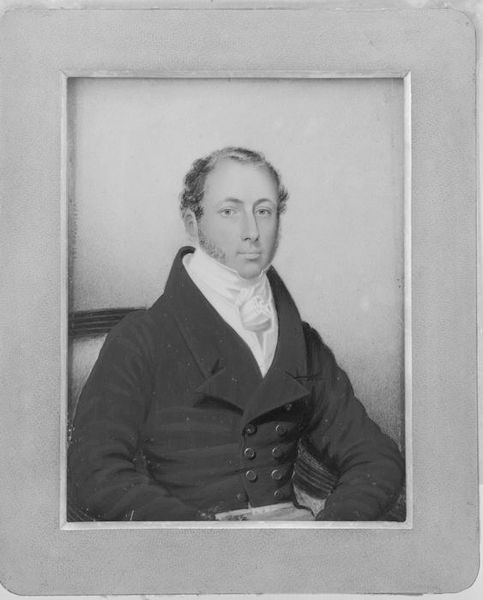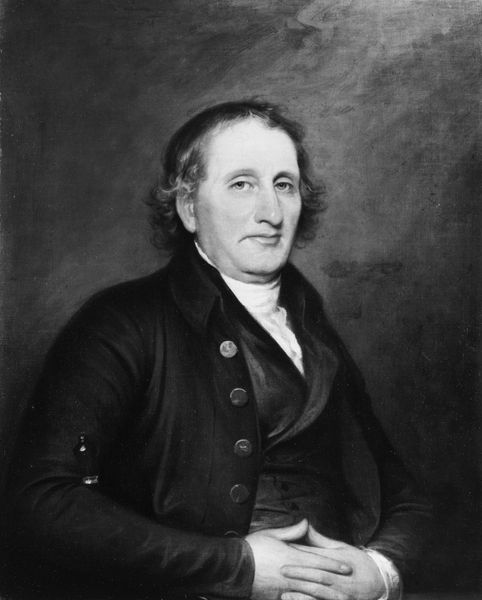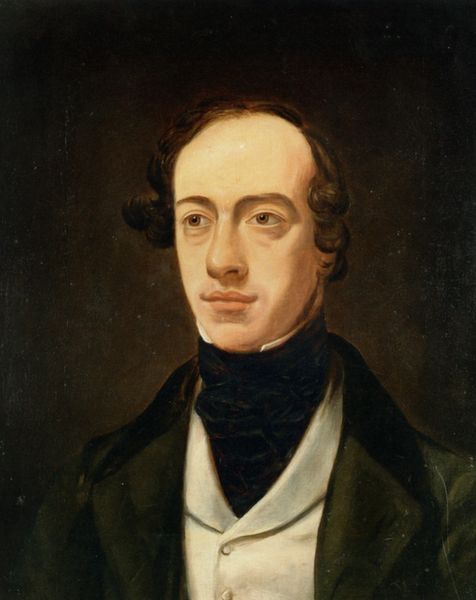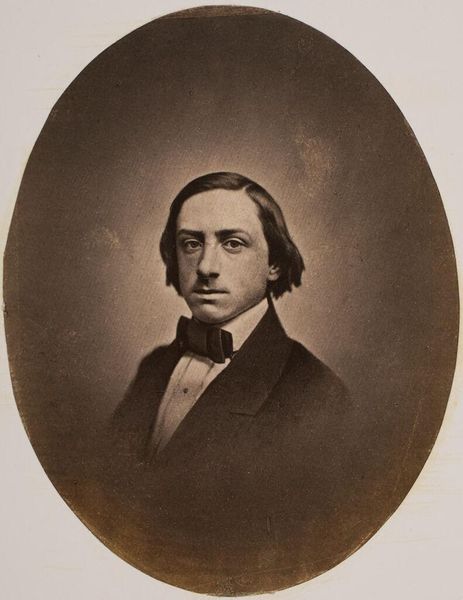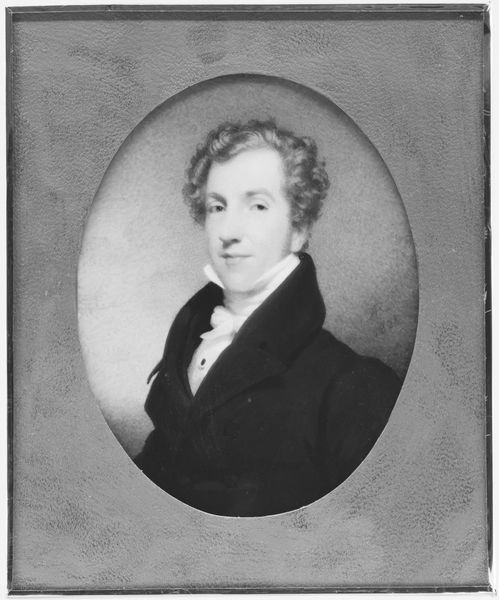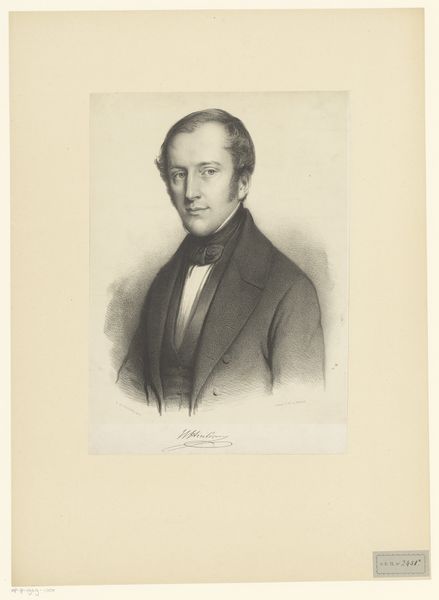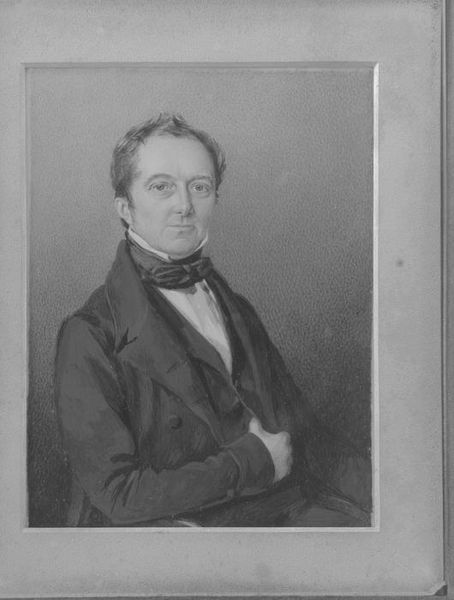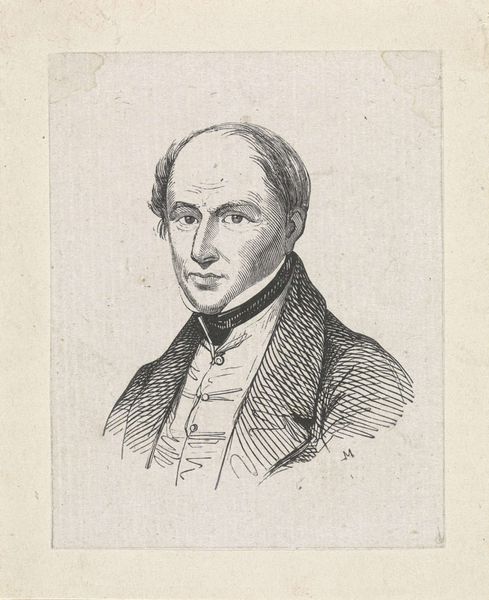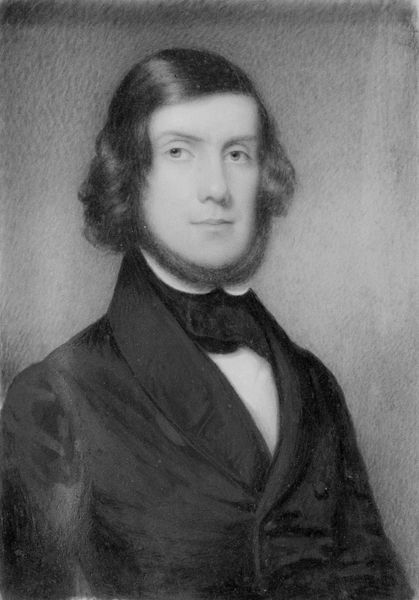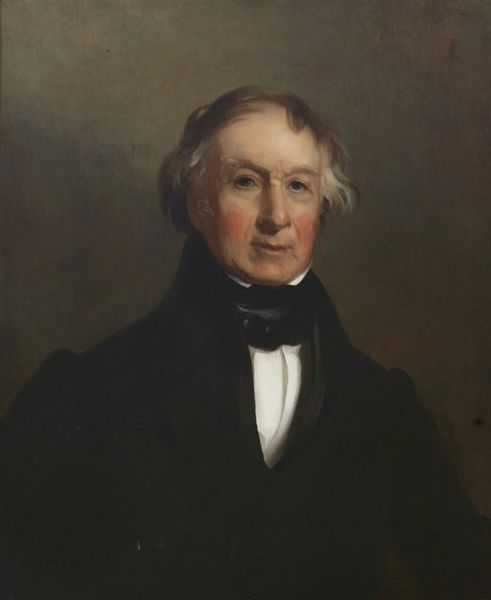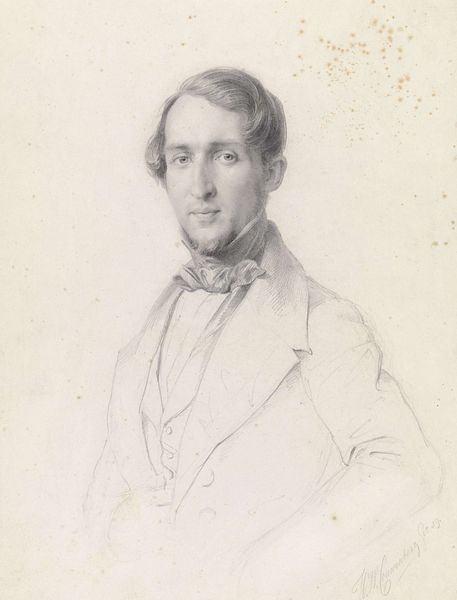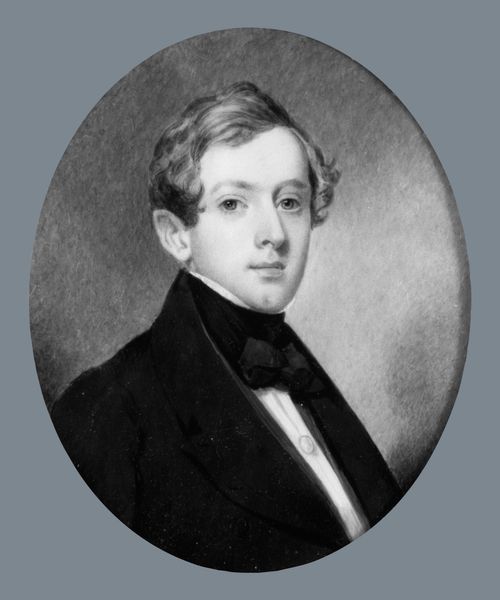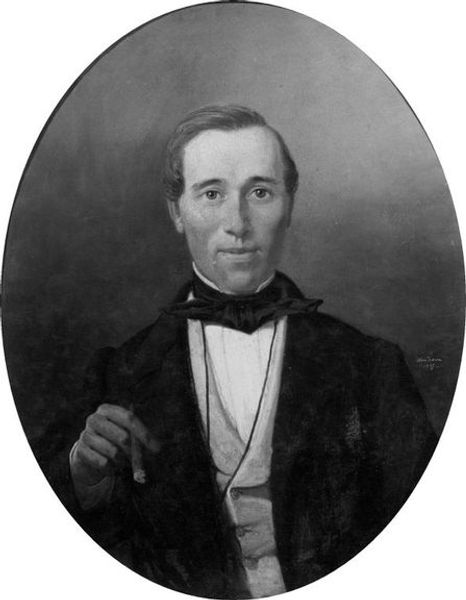
painting, oil-paint
#
portrait
#
portrait
#
painting
#
oil-paint
#
romanticism
#
academic-art
Dimensions: 36 1/8 x 30 in. (91.8 x 76.2 cm)
Copyright: Public Domain
Curator: Before us is a portrait of Charles Henry Augustus Carter, painted between 1842 and 1845. It's currently part of the Metropolitan Museum of Art's collection. Editor: He looks…contained. Very formally dressed, in shades of black, like he’s mourning. His eyes have a certain depth though, suggesting someone who's observant and possibly critical of society. Curator: The black attire, precisely the dark palette, would have been typical for a man of his station in the 1840s, reflecting a period of formality and adherence to social norms. Notice how the artist uses shadow and light, chiaroscuro, to give dimension to the sitter. There are undercurrents of romanticism in the execution, particularly in the expressive face. Editor: That somberness, which pervades, has me wondering what pressures, socially and psychologically, impacted men of privilege during this period. He represents this tension; I suspect expectations of leadership collided with his individual vulnerabilities. What pressures existed for elite men in those decades? Curator: Expectations of civic engagement were extremely high. In Western portraiture traditions, poses, gestures, even the clothing have historically symbolized power, status, or specific attributes deemed desirable for leaders. This man had great responsibilities thrust upon him, or at least that is how he projected himself to the world. Editor: Precisely. I suppose the portrait, even in its romantic execution, acts as a social record as much as an individualized character study. A performance for posterity, even? The accoutrements almost construct a specific, public, persona. What can an image like this do for people today? Curator: Well, I think this kind of academic-style image prompts us to delve into how much these societal expectations continue to affect modern culture. Images can perpetuate ideals while simultaneously encouraging discourse. Looking back we might find avenues of transformation and even liberation for both women and men alike. Editor: It certainly makes you wonder. It provides us the ability to revisit how gender roles and their visual representation play such a large part in the theater of identity, then and now. Curator: Indeed. There is more than meets the eye in the details of presentation and our inherited social memory. Editor: So many conversations can spark when looking at this piece—revealing history is vital to finding future freedoms.
Comments
No comments
Be the first to comment and join the conversation on the ultimate creative platform.
